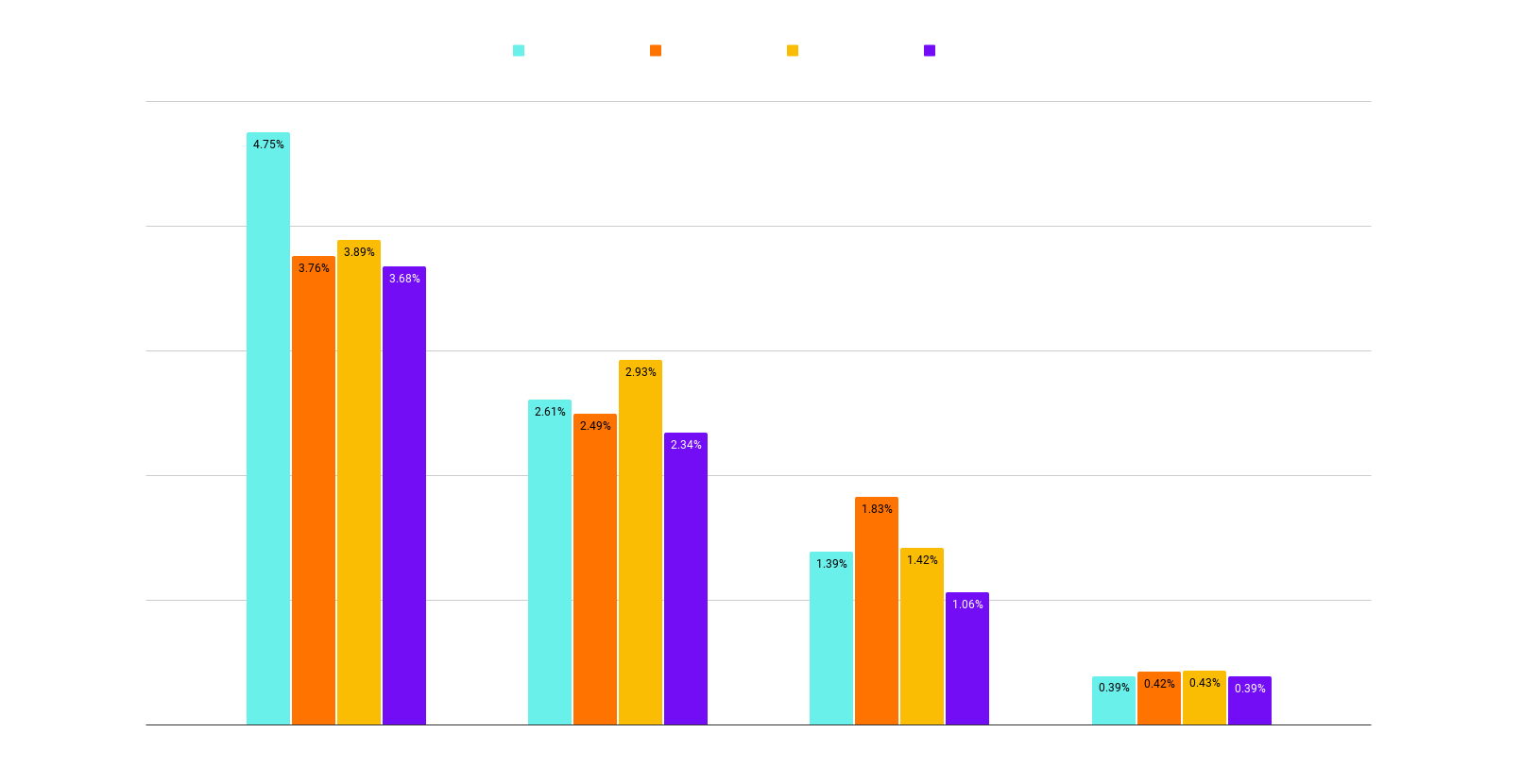 A flood of innovation
A flood of innovation
From the mid-1980s, VCRs, cable and satellite went mainstream, introducing unprecedented consumer choice and dramatic audience fragmentation in television. The impacts on the media industry, as Figure 1 below shows, were profound.
Not long after, the Internet and the Web landed, followed within a decade by the smartphone. These explosive network disruptions accelerated another, arguably even more transformative shift: the irreversible fragmentation of consumer experience itself.

Audiences’ individual attention was – and still is – increasingly divided and distributed across an effectively limitless variety of optional screen experiences. In major consumer-facing industries, this has driven the imperative of so-called “omni-channel” experience management. So what are the implications of experience fragmentation for gaming, the largest, fastest-moving and most complex of entertainment sectors?
 Greater expectations
Greater expectations
If the demands of consumers have been heightened by omni-channel, the corresponding pressure on the gaming ecosystem is proportionately much greater. Gamers will not only expect, as they do today, to access their favourite titles via multiple platforms and devices.
They will be looking for comparable levels of performance between console, PC, tablet and mobile. And they will soon enough come to expect the ability – yes, even in the same session – to move, without significant loss of experience quality, between channels and devices.
 New frontiers in GPM
New frontiers in GPM
From our inception in 2013, GameBench focused on the relative performances of the increasing range and types of devices available to gamers. As the industry has matured and expanded, we’ve extended our footprint to cover all of the key experience metrics right across the ecosystem, from studios through to OEMs. Today, we see network providers being rapidly pushed to the very sharp end of gamer expectation.
Mobile games already represent 50% of global gaming revenues, and there are currently some 1 billion online gamers worldwide. Cloud gaming (see also our PIQ 2 bulletin) is set for over $5 bn revenues by 2025. Perhaps the most striking trend of all, in terms of its implications for network performance concerns, is that already in 2021 over 50% of gamers report playing an MMO weekly.
 Impact and implications
Impact and implications
The continuous evolution and growth of networks has invariably been the primary driver of audience and experience fragmentation. They began as a secondary component of the ecosystem, download channels for native games played on a limited range of devices.

Their role – along with the inevitable performance issues – increased significantly as gaming went mobile and multi-player, and platforms and devices proliferated.
We now, quite suddenly, grasp that networks, in a remarkable shift from channel to overall environment – indeed we could say “playing field” – have become the locus of the gaming experience itself. And the performance consequences demand urgent attention. Figure 2 above illustrates the comparatively high proportion of gamer complaints relating to network lag.
It’s a common misconception that disruptions are caused by innovative technologies. This is only indirectly true. It’s significant shifts in customer value – in particular, changes in the cycle of experience and expectation – that require our attention.
The gaming industry faces the challenge of providing a unified and consistent quality of performance across a growing diversity of devices and channels.
And while any recently released smartphone is a highly performant gaming device right out of the box, ISPs and mobile operators will need to carefully track and measure these ever-shifting experiences and increasing expectations – not to mention spending power – of the world’s now close to 3bn gamers.
Performance IQ by GameBench is a hassle-free, one-minute read that keeps you abreast of precisely what you need to know. Every two weeks, right to your inbox. Here’s a quick and easy sign up for your personal invite to the sharp end of great gamer experience.
And of course, get in touch anytime for an informal chat about your performance needs.
![]() The intelligence behind outstanding performance
The intelligence behind outstanding performance

